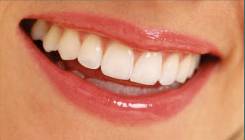What is Orthodontics?
Orthodontics is the branch of dentistry that corrects teeth and jaws that are positioned improperly. Crooked teeth and teeth that do not fit together correctly are harder to keep clean, are at risk of being lost early due to tooth decay and periodontal disease(Ranges from simple gum inflammation to serious disease that results in major damage to the soft tissue and bone that support the teeth), and cause extra stress on the chewing muscles that can lead to headaches, TMJ syndrome and neck, shoulder and back pain. Teeth that are crooked or not in the right place can also detract from one's appearance. Orthodontics is a specialty field of dentistry that diagnoses, prevents and treats irregularities of the teeth and face, including the position of teeth and jaws.
The benefits of orthodontic treatment include a healthier mouth, a more pleasing appearance, and teeth that are more likely to last a lifetime.
Orthodontics includes treating and controlling various aspects of facial growth (dentofacial orthopedics) and the shape and development of the jaw
Orthodontics also includes cosmetic dentistry; when the patient's aim is to improve his/her appearance.
A specialist in this field is called an orthodontist.
Diagnosing dental problems and recommending treatment options
Assessment - the orthodontist will assess the state of the patient's teeth and make a prediction on how they are likely to develop without treatment. The following diagnostic procedures will be performed:
- A full medical and dental health history
- A clinical examination
- X-rays of the teeth and jaw
- Plaster models of the teeth
After the assessment is done, the orthodontist will decide on a treatment plan
An orthodontist uses a range of medical dental devices to help in:
- Closing wide gaps between the teeth
- Making sure the tips of the teeth are aligned
- Straightening crooked teeth
- To improve speech or eating (oral function)
- To improve the long-term health of gums and teeth
- To prevent long-term excessive wear or trauma (of the teeth)
- Treating an improper bite
How Does Orthodontic Treatment Work?
Many different types of appliances, both fixed and removable, are used to help move teeth, retrain muscles and affect the growth of the jaws. These appliances work by placing gentle pressure on the teeth and jaws. The severity of the problem will determine which orthodontic approach is likely to be the most effective.
Fixed appliances include:
Braces
An appliance used to gradually move teeth into their proper alignment. Wires are bonded to the teeth and tightened over time to align the teeth. Braces are usually adjusted monthly to bring about the desired results, which may be achieved within a few months to a few. Today's braces are smaller, lighter and show far less metal than in the past. They come in bright colors for kids as well as clear styles preferred by many adults.

Special fixed appliances — used to control thumb sucking or tongue thrusting, these appliances are attached to the teeth by bands. Because they are very uncomfortable during meals, they should be used only as a last resort.

Fixed space maintainers — if a baby tooth is lost prematurely, a space maintainer is used to keep the space open until the permanent tooth erupts. A band is attached to the tooth next to the empty space, and a wire is extended to the tooth on the other side of the space.

Jaw repositioning appliances — these devices help train the jaw to close in a more favorable position.

Lip and cheek bumpers — these are designed to keep the lips or cheeks away from the teeth. Lip and cheek muscles can exert pressure on the teeth, and these bumpers help relieve that pressure.

Palatal expander — a device used to widen the arch of the upper jaw. Outward pressure applied by screws force the joints in the bones of the palate to open lengthwise, widening the palatal area.

Removable retainers — worn on the roof of the mouth, these devices prevent shifting of the teeth to their previous position.

Headgear — with this device, a strap is placed around the back of the head and attached to a metal wire in front, or face bow. Headgear slows the growth of the upper jaw, and holds the back teeth where they are while the front teeth are pulled back.

Aligners — an alternative to traditional braces for adults, serial aligners are being used by an increasing number of orthodontists to move teeth in the same way that fixed appliances work, only without metal wires and brackets. Aligners are virtually invisible and are removed for eating, brushing and flossing.

Good oral hygiene is essential before any orthodontic work can begin. When devices are placed on the teeth, bits of food are much more likely to become stuck; the patient will need to brush much more carefully and more often to prevent tooth decay while treatment is ongoing. Patients who have not reached good oral hygiene
standards beforehand are much more likely to suffer from tooth decay after treatment begins.
Can adults benefit from orthodontic treatment?
Orthodontic treatment can be successful at almost any age. In fact, about one in every five orthodontic patients today is over age 18.
How long does treatment take?
Patients who need orthodontic treatment generally have one to three years of active treatment, plus retention
A pleasing smile can be a big plus for you on the road of life. It engages others, and shares warmth. Orthodontics is an investment in you, your future, your potential. Orthodontics can help bring out the best in you.











